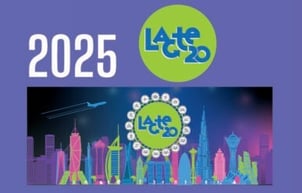Sourcing an accurate and clear language interpretation solution is essential to delivering high-quality multilingual hybrid events. But finding the right solution can be a challenge, especially as interpretation needs to be provided for both on-site and virtual attendees. This logistical hurdle is multiplied by the number of languages that require interpretation.
Many hybrid event organisers have turned to Remote Simultaneous Interpretation (RSI) technology to solve this problem. But is RSI a good fit for your hybrid event? Let’s compare RSI with traditional interpretation before exploring how RSI fits into the hybrid event landscape.
The traditional interpretation setup
Before the COVID-19 outbreak, many event organisers relied on traditional interpreting methods. This required interpreters to sit in soundproof booths, listen to speech while interpreting speech in real-time. Attendees would then listen to interpretation through radio receivers and headphones.
With social distancing in 2020, interpreters were required to rethink their work routine and get accustomed to remote technical setups. While RSI providers like Interprefy provide extensive pre-event training opportunities and technical support for interpreters throughout the event, the remote setup still presents a challenge for less tech-savvy conference interpreters.
One of the advantages of the traditional setup is that it brings interpreters closer to the speaker. It also provides interpreters with a professionally set up working environment, along with technical on-site support.
Despite these advantages, traditional interpretation has always been an expensive and administration-heavy solution. For event planners, organising on-site interpretations involves
sourcing and vetting interpreters that are available for travel during the event days and organising their travel arrangements.
Organising equipment is another challenge that requires renting and setting up sound booths and hardware equipment. This equipment can range from microphones and headphones to radio receivers for event participants.
But with all these challenges, event planners only have so much budget and space to work with. With the high cost of setting up traditional interpretation, planners may be forced to limit how many language interpretations they offer.
With this in mind, how does RSI compare?
How Remote Simultaneous Interpretation is changing hybrid events
Let’s look first at how RSI works. Generally, delegates will speak in one language, with their voice and image being transmitted to an interpreter located remotely via a cloud-based RSI platform. This interpreter will then stream back real-time language interpretation through the RSI platform and attendees access interpretation via mobile phones, laptops, or radio receivers.
By enabling remote real-time interpretation, any event can be multilingual without the need for on-site interpretation and AV equipment while still having full remote support. With this being said though, RSI is still fully compatible with traditional interpretation setups, as shown below:
With the right RSI provider, remote interpretation can be easily added to any onsite meeting by logging in interpreters into the interpreter interface or connecting the logged-in interpreter laptops to sound channels from the existing booths. With Interprefy, for instance, you can benefit from added flexibility, scalability, guidance throughout the process, and technical support. We can even take care of the whole onsite integration so you can focus solely on what really matters.
Another strong benefit of RSI is that your selection of interpreters is not restricted by their travel availability, allowing you to source the best talent worldwide. As interpreters don’t need to be physically present to provide their services, you can add more interpretation languages to your event.
RSI in the post-pandemic event world
Rather than competing directly with traditional interpretation, RSI helps organisers benefit from the best of both worlds. With RSI, you can scale your events by offering interpretation to larger audiences at smaller financial and administrative costs. This enables even smaller organisations to hold multilingual events. So the choice to use RSI is not a decision of hardware vs software. It’s a matter of gaining the flexibility to combine the technology required to cater to the needs of virtual and on-site attendees.
As the availability of interpreters is not restricted by travel requirements, organisers can source focus on selecting the best possible interpreters in any given language for their events. Additionally, organisers aren’t constrained by limited event space as there’s no need to stage sound booths for interpreters to work from. This is a win–win scenario for hybrid events, as the language needs for in-person and online participants can easily be catered for. And with less overall admin to worry about, organisers can focus on improving other areas of their event.
Considering all these benefits, it’s clear that RSI will continue making hybrid events easier to run and more inclusive for multilingual audiences.
At Interprefy, we offer advanced RSI that enables interpreters to deliver with near-zero latency and crystal-clear audio interpretation. Our solution has empowered many multilingual hybrid events — and our customers include the likes of Google, UEFA, and J.P Morgan.
To learn more about how our RSI can help your event, speak to a member of the Interprefy team.


-min.png?width=1040&height=800&name=Blog%20Header%20(16)-min.png)


 More download links
More download links



